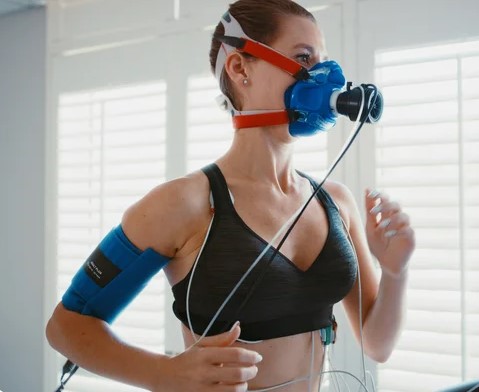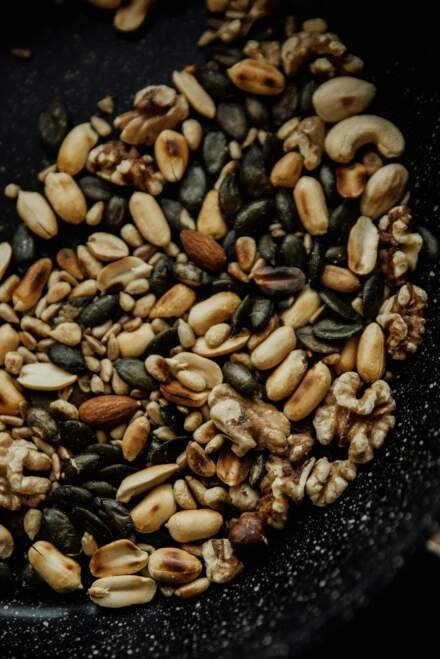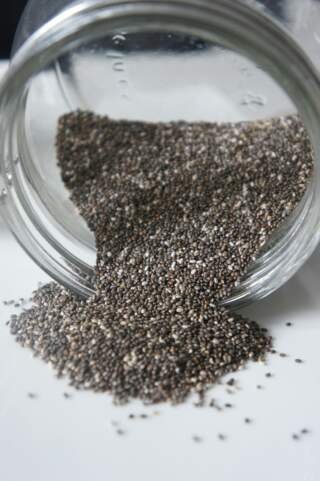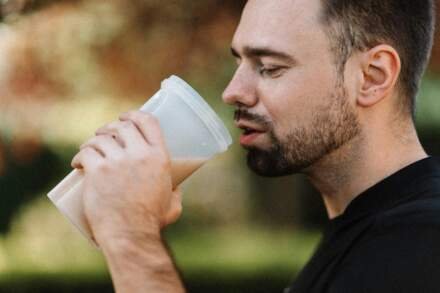Whether you’re new to exercise or a seasoned athlete, tracking fitness progress can help you determine how well your training is working. First, you’ll want to assess your current fitness level. You can do this by learning your VO₂ max. VO₂ max measures how efficiently your body uses oxygen during exercise. Generally, a higher VO₂ peak is associated with a higher fitness level.
Some factors that affect your VO₂ max, such as age or gender, are out of your control. But you can improve your VO₂ max by focusing on variables you can control – especially the intensity of your exercise.
What is VO₂ max?
During exercise, your breathing and heart rate increase. Your lungs take in more oxygen and your heart circulates oxygen-rich blood. Your muscles use that oxygen to generate energy and power your workout.
VO₂ max is the maximum (maximum) rate (V) of oxygen (O₂) that your body is able to use during exercise.
Oxygen is an important component of the respiratory process involved in respiration. As you breathe in oxygen, your lungs absorb it and turn it into energy, a reliable source of adenosine triphosphate (ATP).
ATP powers your cells and helps release carbon dioxide (CO₂) that is produced during your breathing process when you exhale.
This means that your body can better handle aerobic fitness activities that require a lot of oxygen intake, such as running, swimming and other forms of cardio.
Should VO₂ max improve?
A high VO₂ max can be a good predictor of your athletic performance, especially if you’re a runner or swimmer. Your VO₂ max can serve as a benchmark to track your progress as your athletic ability improves, or if you’re trying to keep your VO₂ max at a certain level to maintain your performance.
But oxygen intake is used more for athletes, not just for athletes. It is a way of determining cardiorespiratory fitness in someone. Medical professionals can use it to determine the health of your heart and lungs. Everyone – regardless of their athletic ability – should try to increase their cardiovascular endurance. According to research, a higher VO₂ peak is associated with a lower risk of death.
How is VO₂ max measured?
Typically, VO₂ peak tests are administered by a doctor, cardiologist, or fitness specialist in a medical facility such as a lab or hospital.
Submaximal exercise test
Some personal trainers and fitness instructors may also have certifications that allow them to administer VO₂ max tests. These tests can be called “submaximal trusted sources” because they are performed below (sub) maximal heart rate and below maximal fatigue level, usually around 75%-85% max heart rate.
Submaximal exercise tests are still a useful way to measure your VO₂ maximum level during exercise and your overall level of heart and lung endurance.
The best VO₂ max test type for you depends on your fitness level. If you exercise regularly or are a trained athlete, your doctor or trainer may perform one of the following tests:
- Astrand treadmill test trusted Source
- 2.4 km run test
- multistage bleep test
If you are new to exercise or haven’t exercised in a while, you can do a simple walk/run test on the treadmill. Other possible VO₂ max tests include:
- Cooper 1.5-mile walk-run testTrusted Source
- Rockport 1-mile walk test
- treadmill testTrusted Source
- compare your best speed or time to average results from others for similar activities
What is considered a ‘good’ VO₂ max?
VO₂ maximum depends on a few key factors:
- age
- gender
- fitness level
- elevation, such as at sea level or in the mountains
Some of these factors, such as age and sex, are uncontrollable. But much of your oxygen intake depends on your fitness level, which can be managed.
Some of these factors, like age and sex, are uncontrollable. But the majority of your oxygen uptake depends on your fitness level, which can be managed.
Here are some averages based on sex and age that you can use for reference.
Typical VO₂ max for people born male measured in mL/kg/min:
| Age | 20–29 | 30–39 | 40–49 | 50–59 | 60–69 | 70–79 |
| Superior | 55.4 | 54 | 52.5 | 48.9 | 45.7 | 42.1 |
| Excellent | 51.1 | 48.3 | 46.4 | 43.4 | 39.5 | 36.7 |
| Good | 45.4 | 44 | 42.4 | 39.2 | 35.5 | 32.3 |
| Fair | 41.7 | 40.5 | 38.5 | 35.6 | 32.3 | 29.4 |
| Poor | <41.7 | <40.5 | <38.5 | <35.6 | <32.3 | <29.4 |
Typical VO₂ max for people born female measured in mL/kg/min:
| Age | 20–29 | 30–39 | 40–49 | 50–59 | 60–69 | 70–79 |
| Superior | 49.6 | 47.4 | 45.3 | 41.1 | 37.8 | 36.7 |
| Excellent | 43.9 | 42.4 | 39.7 | 36.7 | 33 | 30.9 |
| Good | 39.5 | 37.8 | 36.3 | 33 | 30 | 28.1 |
| Fair | 36.1 | 34.4 | 33 | 30.1 | 27.5 | 25.9 |
| Poor | <36.1 | <34.4 | <33 | <30.1 | <27.5 | <25.9 |
Can increase VO₂ max?
It is normal for your VO₂ max to generally decrease as you age.
There are many things you can do to maximize your VO₂ peak levels for your age and desired fitness level. A 2016 study found that even occasional intense workouts can help improve VO₂ peak levels.
Here are some suggestions:
High Intensity Interval Training (HIIT): This involves doing a few minutes of intense aerobic exercise, such as cycling on a stationary bike, reducing the intensity for a few minutes and then increasing the intensity again.
Vary a workout with aerobics: start with cycling, then swimming, then running, and so on. Rest between each activity.
Perform any cardio activity: Although intensity improves VO₂ max levels the most, any cardio exercise other than walking should improve cardiorespiratory fitness and VO₂ max in sedentary individuals.
Takeaway
VO₂ max is a good benchmark for measuring your aerobic fitness level. Because it literally tells you how much oxygen your body is using.
If you’re an athlete who loves cardio, VO₂ max should be one of your calling cards for assessing your fitness and measuring your progress over time if you’re trying to improve your performance.
Even if you’re not an athlete, visit your local gym or doctor and ask for a submaximal exercise test.
VO₂ max is a strong predictor of your cardiovascular health as you age. Finding and maintaining a better or higher VO₂ max score is worth tracking to help you stay healthy throughout your life.












Leave a Comment